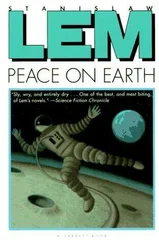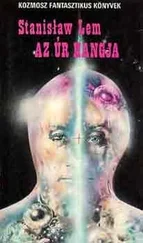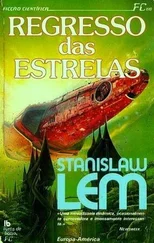I have no illusions. I fear that I will not be listened to, because no longer are there universal authorities. The distribution — or disintegration — of specialization has advanced so far that the experts declare me unqualified whenever I encroach upon their particular territory. It has been said that a specialist is a barbarian whose ignorance is not well-rounded. My pessimism is based on personal experience.
Nineteen years ago I published, with a young anthropologist named Maxwell Thorpe, who later died tragically in an automobile accident, a paper in which I proved the existence of a complexity threshold for finite automata with algedonic control, to which class belong all the animals as well as man. Algedonic control means an oscillation between punishment and reward, as between pain and pleasure.
My proof showed that if the number of elements of a regulatory center (a brain) exceeds the maximum of four billion, the set of such automata displays a distribution between the opposing parameters of control. In each such automaton one of the poles of control can become dominant; or — to put it in more popular language — sadism and masochism cannot be avoided, and their appearance in the anthropogenetic process was inevitable. Evolution “chose” such a solution because it operates statistically: what matters to it is the survival of the species, and not the defective states, the ills, the sufferings of separate individuals. Evolution is, as an engineer, an opportunist, not a perfectionist.
I was able to show that in any human population, assuming panmixia (random interbreeding), at most 10 percent will manifest a good equilibrium of algedonic control, while the rest must deviate from the norm. Inasmuch as I belonged, even at that time, in the forefront of the mathematical world, the impact of this proof on the communities of anthropologists, ethnologists, biologists, and philosophers was equal to zero. For a long time I could not understand it. My work was no hypothesis but a formal — therefore irrefutable — proof demonstrating that certain human characteristics, over which a legion of thinkers through the centuries had racked their brains, were accounted for entirely by a process of statistical fluctuation, a process — whether in the construction of automata or of organisms — impossible to circumvent.
Later I expanded the proof to include, as well, the phenomenon of the appearance of ethics in social groups, and there I was able to rely on the excellent material that had been prepared by Thorpe. But this paper, too, was ignored. After a number of years, having had a great many discussions with the specialists who dealt with man, I came to the conclusion that my discovery had failed to gain their recognition for the reason that none of them wanted that kind of discovery. The style of thinking that I represented was in those circles a repugnant thing, because it provided no scope for rhetorical counterargument.
It had been tactless of me to prove something on the topic of man — mathematically! At the very best my work was called “interesting.” Not one of those specialists was willing to accept that the venerable Mystery of Man, the unexplainable aspects of his nature, is a consequence of the General Theory of Regulation. Of course, this opposition was not expressed outright, but the proof was held against me. I had behaved like a bull in a china shop, because that which could not be figured out by anthropology and ethnography, with their field research, or by the profoundest philosophical reflection — meditation on “human nature,” and which defied prepositional formulation in both neurophysiology and ethology, and which provided fertile ground for ever-proliferating metaphysics, for psychological abstrusity, and for psychoanalysis classical and linguistic, and God knows what other esoteric study — I had attempted to cut through, like the Gordian knot, with my proof contained in nine printed pages.
They had grown accustomed to their high office of Keepers of the Mystery, whether the Mystery was called the Transmission of Archetypes, Instinct, the Life Force, or the Death Wish; and I, crossing out these holy words with some sort of transformational groups and ergodic theorems, claimed to possess the solution to the problem! Therefore they took a decided dislike to me (though scrupulously concealed) — an indignation toward that crude heathen who lifted his hand against the Enigma, who sought to stop up its perennially vital wellspring, and silence lips that with such satisfaction posed unending questions. Since the proof allowed no refutation, it became necessary to ignore it.
These remarks are not occasioned by a wounded vanity. The works for which I was hoisted up on a pedestal belong in another field — that of pure mathematics. But the experience was most enlightening. We tend to underestimate the inertia of the style of thought in different branches of science. Psychologically, of course, it is to be expected. The resistance we offer to the statistical model is much more easily overcome in atomic physics than in anthropology. We gladly accept a lucid, well-constructed statistical theory of the atomic nucleus, if experimentation supports it. Becoming acquainted with such a theory, we do not ask, “Fine, but how are the atoms actually behaving?” — because we know the foolishness of such a question. But similar revelations in the realm of anthropology we will fight with our last breath.
It has been known, for forty years now, that the difference between a noble, upright man and a maniacal degenerate can be pinpointed at the site of a few clumps of white matter in the brain, and that the movement of a lancet in the supraorbital area of the brain, if it damages those clumps, can transform a splendid soul into a loathsome creature. Yet what an enormous portion of anthropology — not to mention the philosophy of man — refuses to take cognizance of this circumstance! But I am no exception here; whether scientists or laymen, we agree finally that our bodies deteriorate with age — but the mind?! We would like to see it different from any earthly mechanism subject to defect. We crave an ideal — even one carrying a minus sign, even one shameful, sinful, so long as it delivers us from an explanation worse than the Satanic: that what is taking place is a certain play of forces perfectly indifferent to man. And because our thinking moves in circles from which it is impossible to leap free, I admit that there is some truth in the words of one of our foremost anthropologists. He said to me once — I remember it well — “The satisfaction with which you parade your proof of the lottery origin of human nature is not pure. It is, besides the joy of knowledge, a pleasure in befouling that which others consider lovely and hold dear.”
Whenever that unrecognized work of mine comes to mind, I cannot help thinking, sadly, that there must be many other such works in the world. Rich lodes of potential discoveries no doubt lie in various libraries, but have gone unnoticed, untapped, by competent people.
We are at home with this simple image: what is dark and unknown stretches out before the monolithic front line of science, while what has been acquired and understood constitutes its rear. But it really makes no difference whether the unknown lies in the lap of Nature or, instead, is buried among the pages of worthless manuscripts read by no one; because an idea that has not entered the bloodstream of science, and does not circulate seminally in it, in practice does not exist for us. The receptivity of science, at any time in history, to a radically different interpretation of phenomena has in fact not been great. The madness and suicide of one of the creators of thermodynamics is an example of this.
Our civilization, in its “advanced” scientific part, is a narrow construct, a vision repeatedly constricted by a historically stiffening conglomeration of multiple factors, among which sheer coincidence, though considered to be in strict accordance with inflexible methodologies, may play a major role. All that I write here is to the point.
Читать дальше












